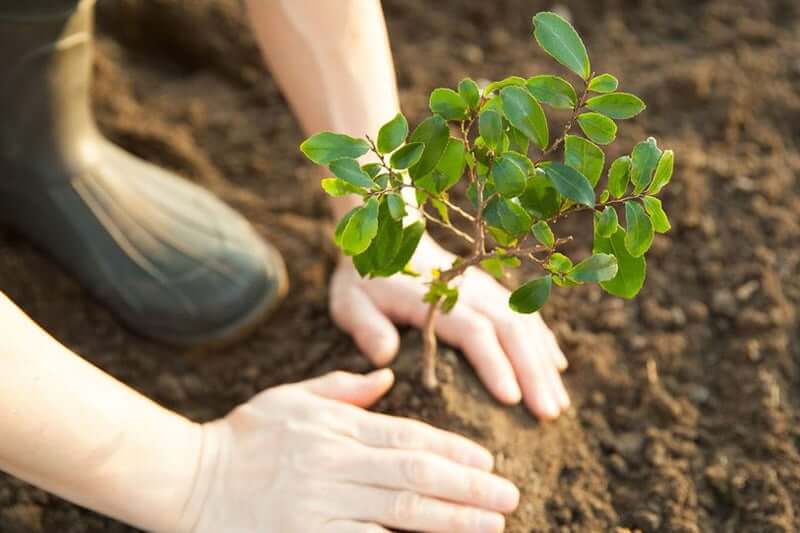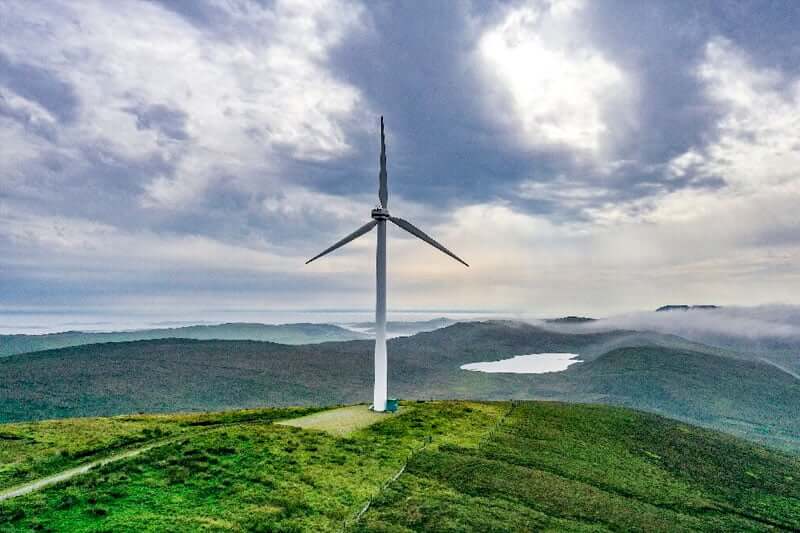For many environmentally aware individuals, tree planting is the preferred strategy. They take on the task personally whenever possible or contribute to organizations dedicated to planting trees. Although there are advantages to planting trees to combat climate change, it can sometimes harm other nearby ecosystems.
Planting the wrong type of trees can wipe out local endangered species as they fight for resources. They can often reduce the biodiversity of birds and bugs in the area. Furthermore, indiscriminately planting trees can negatively affect moisture availability for other plants and even drain small streams dry that local animals rely on.
Here is why planting trees shouldn’t be the only go-to answer to all climate change-associated challenges.

What we cover
ToggleWhat are the disadvantages of planting trees for climate change?
Planting trees for climate change is a popular trend. But as it turns out, it is often not the best way of fighting against climate change. Here are the reasons why.
1. Ends up wiping out native trees
Tree planting initiatives tend to be laser-focused on planting as many trees as possible. As a result, they tend to plant hardy trees that grow fast and which don’t require a lot of maintenance. This is often to the detriment of local more delicate species.
The consequence of these initiatives is that native tree populations are gradually decreasing. And given that some of these native species store more carbon over the long run, these efforts sometimes end up being counterproductive.
Some trees are great for straight absorbing Co2 from the atmosphere but are not the best tree type for the area. The best trees to plant to offset climate change are ones local to the area.
2.Trees don't always absorb carbon from air
According to a BBC report1, scientists who were studying the effect of trees on carbon found that trees don’t always pull carbon from the air. Whether or not they do usually depends on where the trees are planted.
Chile’s native forests are extremely biodiverse and they absorb and store large amounts of Co2, the tree planting scheme failed to increase the carbon stores and accelerated biodiversity loss because of poor planning and the quantity not the right quality of trees planted.
As a result, a one-size-fits-all approach to tree planting can actually have the opposite effect on what people generally expect.
3. Reduction in stream flows
Trees consume water2. They usually accelerate the rate at which water from the ground evaporates and escapes to the atmosphere. This can have devastating effects on neighboring plants and animals.
When you plant trees indiscriminately, they will reduce the amount of water that flows in rivers and streams. Any native vegetation, and animals, that are used to receiving a given amount of moisture are thus likely to struggle to survive. With time, this is something that can lead to the deterioration of local populations of both trees and animals. This is not great for the environment.
4. Bad for biodiversity
When similar species of trees are planted in a given area, the trees tend to strip given sets of nutrients from the soil. Planted trees absorb magnesium, calcium, and potassium in most cases. This is something that negatively affects soil health in the area.
As a result, the range of plants and organisms that exist in such areas tends to be limited to those that can handle the new soil structure. This makes indiscriminate tree planting for climate control bad for biodiversity.
5. It is a short term solution
Trees are good at sucking carbon from the air. However, they store it temporarily.
When they eventually die, they rot. And when this happens, the trees release the carbon back into the environment. There is also the fact that, in some cases, trees are used as a source of energy. They can also catch fire due to forest fires. All of these things make it a not-so-effective method of climate change control.
6. Unclean energy is used to foster planting efforts
Heavy machinery is used to dig up and prepare land on which trees have to be planted. The seedlings are often transported to the planting areas. And people who have to plant the trees also have to get to the planting location.
The vehicles, airplanes, and machinery that are used to make tree planting possible do not usually use clean sources of energy. They burn fossils in order to realize the tree-planting goals. This is counterproductive.
7. Use of materials that are NOT eco-friendly
Plastic is cheap and affordable. It is also convenient. This has made it a common material in tree-planting efforts.
It is commonly used to give seedlings support. It is also used as a guard that helps to protect growing seeds from animals. It is also commonly used in packaging seeds and seedlings.
The question is: is having these plastic materials in the environment worth it? Given the effect that plastic has on the environment, the answer is a resounding “No”.
This alone presents a challenge that discounts tree planting as the ideal solution for environment-based problems.
8. There is only so much land available
Planting trees is a limited approach to preventing climate change simply because land is a limited resource. This means that there are only so many trees that you can plant, especially if you are dealing with highly congested areas.
Therefore, implementing tree planting initiatives often faces challenges since these initiatives have to compete for land with agricultural activities. In some cases, they even have to compete with people who are looking for space to settle.
This restricts the extent to which such initiatives can be undertaken. And it sometimes even breeds bad blood with local populations as it can lead to displacements.
9. It is just not enough
The rate at which trees remove carbon dioxide is not good enough. This is because the rate of carbon emissions is so high that relying on tree planting is almost futile. As a result, the best tree planting can do is try to slow down the concentration of greenhouse gasses.
10. A distraction
Tree planting is often marketed as the magic bullet that will solve climate change problems. As a result, the public is tempted to ignore other methods that can be equally effective when it comes to reducing carbon emissions to the environment.
With an emphasis on tree planting, people tend to overlook working solutions that can be actually cheaper, convenient, and more effective. It leads to over-reliance on tree planting, something that in the long term, undermines other climate change solutions.
What is a better alternative for climate change?
If planting trees for climate change has so many disadvantages, what is the average environment-conscious and climate-conscious person supposed to do?
Well, they can start by first hopping off current tree-planting trends that indiscriminately plant trees. They can also play their role in keeping emissions low by doing any of the following.
Stop the destruction of trees
Planting new trees is an inefficient way of removing carbon from the atmosphere. The tree takes longer to grow to the point where it can be effective. It takes up space, is bad for biodiversity, and involves the use of equipment or machinery that can worsen climate change.
Instead of trying to establish new forests, it is way better to invest in protecting existing ones.
Doing so doesn’t come with the risk of permanently changing the biodiversity mix of an area or affecting moisture availability for other plants and animals. And since these forests are already mature, you won’t have to wait before they can start removing carbon from the atmosphere.
Embrace insulation
Insulating your home with high-quality siding, installing insulation in both your walls and attic, and using heavy curtains for your windows are just but a few of the ways in which you can reduce your energy consumption.
When you do this, you help save energy. This will then translate to a smaller carbon footprint.
Use energy-saving equipment and appliances
Energy-saving lights, freezers, cooking appliances, and gadgets help to conserve energy. Using them reduces the overall energy consumption in the world.
And since the main sources of energy in the world right now are unclean, by contributing towards reducing energy consumption, you are helping to reduce the amount of carbon that is released into the atmosphere. This plays a significant role in slowing down climate change.
Switch to cleaner energy options
Clean energy sources like electricity help to reduce emissions. Investing in solar panels can help. And so can opting for an electric vehicle or even a hybrid, the next time you have to buy or rent a car.
In addition to making these changes in your life, you can also advance the mission by supporting companies that make an effort to embrace clean energy sources. This includes getting your power from companies that make the effort to ensure that they generate a significant portion of their energy via clean sources of energy like wind and solar.

FAQ's
Greenhouse gases are the main culprits when it comes to driving climate change. Carbon dioxide is one of these gases. And since trees use carbon dioxide to create food, they help to absorb it from the environment. When this happens at a large enough scale, it can slow down climate change.
The main disadvantage of planting indigenous trees is that they often take too long to grow. This is a problem since trees don’t do much in terms of helping with climate control while they are still young. Therefore, using these trees may do little to help with climate change.
There is also the fact that some indigenous tree species are not great at absorbing carbon and then storing it. Such trees are not great candidates for use as part of an initiative to combat global warming.
You should plant your trees in spring or in fall. These seasons have moderate temperatures. They are also relatively wet. A combination of these conditions makes it easier for trees to grow with little to no maintenance.
Trees help with air pollution by filtering dust particles from the air. They do this by simply standing in the way of these particles, something that forces them to settle on tree branches and leaves. In doing so, trees reduce the concentration of dust particles in the air, something that helps with air pollution.
- Matt McGrath, (2020) Climate change: Planting new forests ‘can do more harm than good <https://www.bbc.com/news/science-environment-53138178> Accessed: 09-02-2024
- Christa Carignan, (2023) Planting Trees In Our Changing Climate <https://extension.umd.edu/resource/planting-trees-our-changing-climate/> Accessed: 09-02-2024




